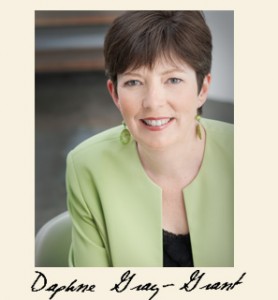Thanks, Stephanie, for a great post on a rarely-discussed component of our freelance copywriting web sites. It’s all about having everything on your site (yes, even the information about YOU) geared towards those things your visitors/prospects really care about—not just talking about ourselves.
When your clients, or your clients’ clients, visit a page you’ve written, the last thing you want them to think is “Why are you telling me this?†Because the moment they start thinking that, they’ll begin to feel like the website is wasting their time.
And the only sites that can get away with that are the ones where the readers KNOW their time is being wasted, but they’re having so much fun, they keep on giving it “just one more click, and then I swear I’ll go to bed!†anyway.
On the other hand, a well-written bio or “About Us†page can give the readers a sense of trust and hope. It shows them that the owner of the website knows what they’re talking about, understands their problems, and truly is well equipped to help them.
Unfortunately, whether you’re writing the copy for your own website or a client’s, knowing how to create an effective bio seems to be a rare skill.
Many business owners, entrepreneurs, and even copywriters fill their bios and “About Me†pages with information that sounds meaningful to them, but to the reader is mildly encouraging at best and actually off-putting at worst.
What’s the difference between a page that bores the readers into closing the tab, and one that makes them want to know more?
There are several, but the one most commonly missed is relevance.
So you have a history as a journalist; how does that make you a better marketing copywriter?
Yes, you had a glorious career in the military, but how does that relate to your ability to help your clients buy a home?
How does having been raised on a farm make you qualified to be a home decorator?
Yes, you’ve got a lot of fancy abbreviations in your description, but what do they mean to ME? (And no, I’m not going to take the time to look them up, because you haven’t gotten me interested enough that I’d want to know!)
If your readers can’t see how your life story or the history of your business makes you better equipped to help them, it may be a mildly interesting read, but it ultimately means nothing to them.
So how do you make the bio, “Story†or “About†page catch the reader’s attention and make them more likely to buy?
1. Use a story the reader can identify with.
When have you or your client been in a position similar to what the target audience is suffering through? Or, if you or they haven’t been through a similar situation, what pain did you or they see someone else going through, that created a desire to learn how to help people experiencing that same difficulty?
By showing that you or your client have been through, or have experience with, the challenge your readers are struggling with, you show them their suffering is understood. You make them realize “This isn’t just some clueless person trying to help with a problem they don’t understand. They know what I’m going through, and they know how hard it is.â€
2. Show them why you or your clients are passionate about the industry.
It goes without saying that someone who’s passionate about a job will be much better at it than a guy just trying to pay his bills. The bio or “About†page should reflect this.
Why is the site owner excited about the problem they solve and the change and benefits they create? The more you show the emotional charge they have for their work, the more you’ll engage the reader’s emotions in turn. And emotion, not logic, is what really persuades people to invest.
3. Give the reader hope that their problems can be overcome.
Don’t just show that the site owner has experienced the problem; show how they’ve overcome it to create a better life for themselves. Help the reader see what’s possible, and show them that if one person or company can make these changes, they can, too.
4. Show how the site owner’s past makes them better at what they do.
Earlier in this post, I asked, “So you have a history as a journalist; how does that make you a better marketing copywriter? Yes, you had a glorious career in the military, but how does that relate to your ability to help your clients buy a home? How does having been raised on a farm make you qualified to be a home decorator?â€
If you can answer these questions, and tie your past or your client’s to the quality of the service being offered, it can help you or them to stand out in a whole new way.
You could tie your journalistic career into your commercial writing by saying,
My time as a journalist taught me to convey stories and messages in ways that are compelling enough to catch the reader’s attention, yet concise enough that they’re willing to read to the end. Because of this, I know how to write your sales pages in a way that gets your readers hooked, and makes them keep reading all the way through your offer instead of leaving halfway through the page.
Or, you could tie your client’s past to their current career by saying things like,
My time in the army instilled in me a toughness and integrity that I bring to everything I do. I’ll fight to get you the very best deal on your house and mortgage, and I’ll make sure that you don’t get caught in any of the common traps that cause people to end up overpaying or stuck in a bad contract.
Or, While I was growing up on the farm, we lived a couple hours away from town, so going out and buying things with which to brighten up the house wasn’t very practical. I learned to use whatever I had at my disposal in unique and creative ways, even if I didn’t have much to work with. Because of this, I know how to make any house beautiful on any budget, so you don’t have to pay through the nose to create a gorgeous home.
See how much more interesting and compelling the story is when it’s tied in to the problem at the top of the reader’s mind?
If people are reading your website or your client’s, they’re doing so for a reason – because they want to know if the answers to their questions and problems are there. By making good use of bios and the “About†or “My Story†page, you can earn their trust, inspire them to believe that their challenges CAN be overcome, and make yourself and your clients stand out in a way that few other things can.
Have you ever used any of these strategies for you or a client?
If you have several stories from your life that seem like a good fit, how do you pick one?
What methods do you use to draw an inspiring life story out of your clients?
What is the most common mistake you see people making when they tell their stories on their sites?
 Stephanie O’Brien is a copywriter, marketing coach, entrepreneur, novelist, and self-growth addict. She uses her twelve years of fiction-writing experience to make her copywriting fun and inspirational as well as effective, and her lifelong exploration of the human mind helps her to get inside her clients’ heads, pick out the words they’re trying to find, and put them onto paper. To learn more about Stephanie, and to discover who your ideal client is so you can get a better idea of how to write your story, visit her website.
Stephanie O’Brien is a copywriter, marketing coach, entrepreneur, novelist, and self-growth addict. She uses her twelve years of fiction-writing experience to make her copywriting fun and inspirational as well as effective, and her lifelong exploration of the human mind helps her to get inside her clients’ heads, pick out the words they’re trying to find, and put them onto paper. To learn more about Stephanie, and to discover who your ideal client is so you can get a better idea of how to write your story, visit her website.
Want to be a guest blogger on TWFW Blog? I welcome your contribution to the Well-Fed writing community! Check out the guidelines here.

